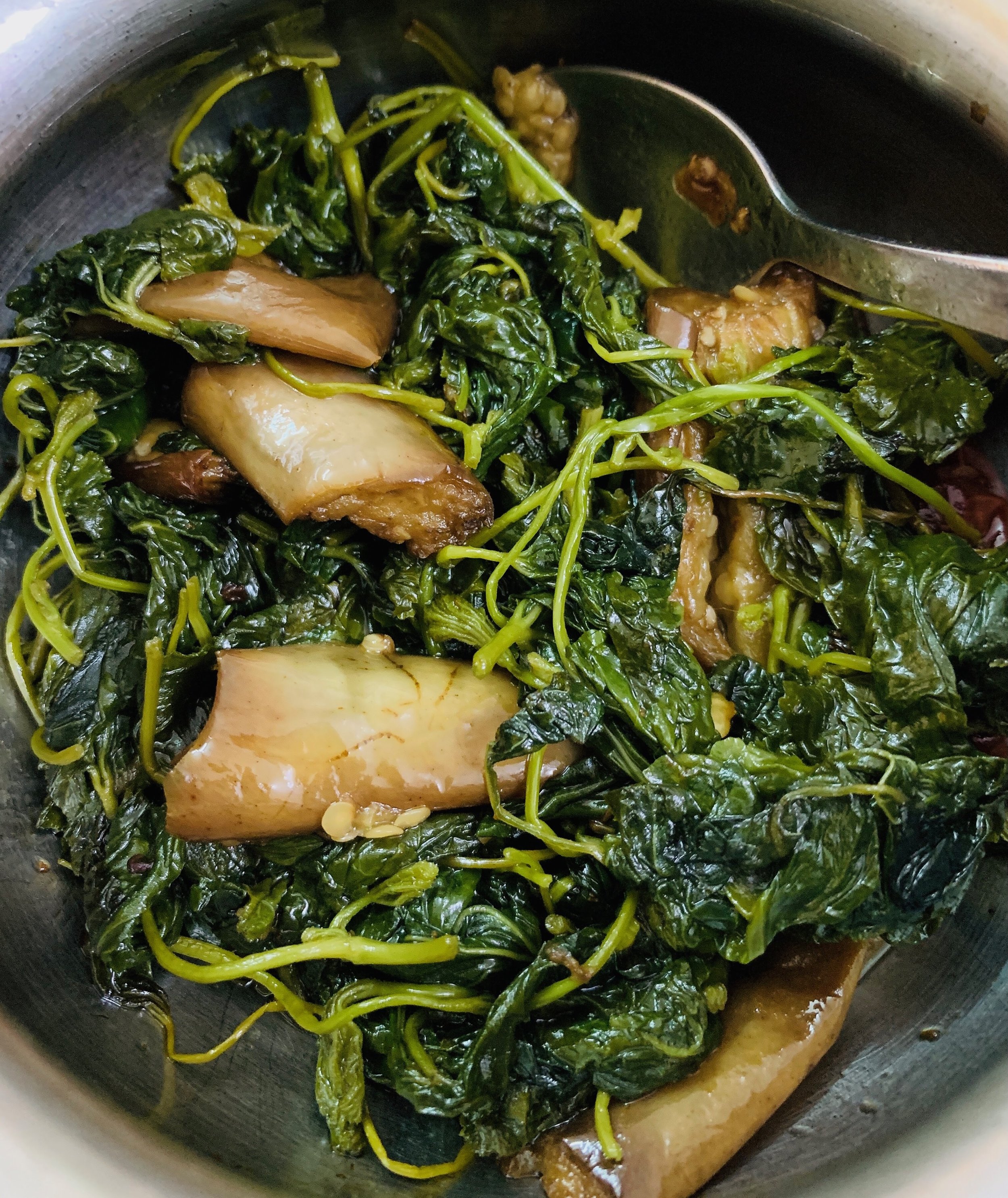The History of Kashmiri Food
What are the origins of the name Kashmir? Where did it come from and how did it embed itself in the vocabulary of Kashmiris?
In many cultures from this subcontinent, rice is a staple. Similarly, since the puranic era rice or “batta” has been an important food for the people. As per the Nilamata Purana rice was cooked in various forms such as simply boiled or converted into sweet porridge with milk. Any scarcity of rice would create a famine like situation, which emphasizes the importance of the rice for the Kashmiri people.
In the Purana there aren’t concrete references to the names of dishes we cook and eat today. However, there are mentions of ingredients that are similar to or are foods from where modern day dishes have come from. The terms used for consumables in the Nilamata Purana are Saysa (all rice and pulses) and Saka (all green vegetables). Besides these, there are also references to spices, fruits, roots, sweetmeats, and medicinal herbs. The term “Haak-Saag” , a dish loved by all Kashmiris is also probably derived from the word Saka, the name for all green vegetables.
Some items mentioned in the Purana are in consumption even at present such as payasa (Rice and milk pudding) and utpalasaka (upalhak, or vopal haak). Vopal Haak is a wild herb that is used both in Kashmiri cuisine as well as Kashmiri pandit ceremonies and rituals.
Since Kashmir was also rich in fruits like apples, plums, grapes, apricots, and peaches— people regularly consumed them. Drinking of wines was also a common practice and was even advised on certain ceremonial occasions festivals as mentioned in the Nilamata Purana. Rice and pulses were cooked together to prepare Khicchari (Khichdi), and is cooked on occasions such as Kyechmaavas even today.
In later eras there are mentions of onion and garlic, however these condiments are more common in Kashmiri Muslim cuisine, and not prevalent in the cuisine of Kashmiri pandits.
In foods mentioned in the Purana, milk and milk preparations like, Ksira (kheer), Dadhi, (curd,) and Ghrata (ghee) were common. Maksika (honey) and Sarkara (sugar) were used to sweeten the food. The spices used were black pepper, ginger and asafoetida and salt was very scarce and hence was used by the rich and the nobles only.
Meat has also been a part of the diet of Kashmiris since the 6th & 7th century AD when the Nilamata Purana was composed. Unlike many parts of India, Kashmiri Pandits have no restrictions on meat and consume it freely. Some Kashmiri Pandits are not meat eaters, but most were. Kashmir is a cold, snowy, icy place and there is not much vegetation that can be found in the cold winter months— even then this was the case. So with the lack of vegetables, our ancestors only had easy access to foal, fish, and other animals as their food.
When Islam was introduced to Kashmir, the influence of Iranian, Afghan and central Asian variety of dishes was seen in the Kashmiri cuisine. This menu can be commonly defined as waazwan. It differs greatly from the Kashmiri Pandit style of cooking and is supposed to be a combination of 36 courses, although it is usually 20 in normal practice. This waazwan is cooked by a professional chef called a Waaza.
Some common Waazwan dishes are ab-gosht (mutton cooked in milk). gushtaba ( fine succulent mince mutton balls simmered in curd), methimaaz (mutton and fenugreek green), kabaab, tabak-maaz, (baked chunks of ribs marinated in spice ghee and milk), rista (spicy, chilli version of gushtaba), martswaangan-korma (chicken cooked in the extract of the red cockscomb flower), daniwal korma (yellow chicken cooked in curd), roganjosh and some variety of vegetables .
Kashmiri Pandits prefer their own variety of curd meat (yakhni), mutcch (meatballs), kalia (yellow meat ) and kabargah (similar to tabakmaaz— fatty ribs boiled and cooked in milk and spice till tender and then dipped in curd marinate, and fried in pure ghee). The vegetarian choices include are damaloo (slowcooked potatoes), chaaman kaliya (yellow cottage cheese), nadur yekhni (lotus stem cooked in curd) etc.

